
Go-to Microsoft partner for requirements management since 2015

Download XML-Based
Process Templates
We believe in providing success.
That’s why we provide teams using Azure DevOps Server, and TFS on-premise with Project Process Templates to help them get started with the right work items.
Check out more information on the process templates we provide below.
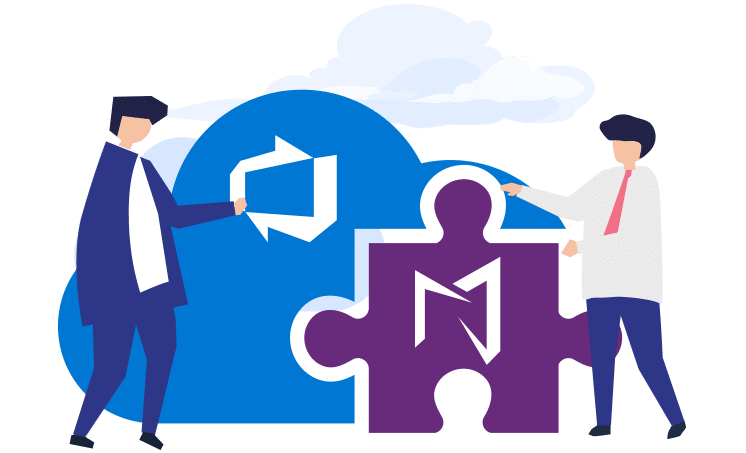
BABOK
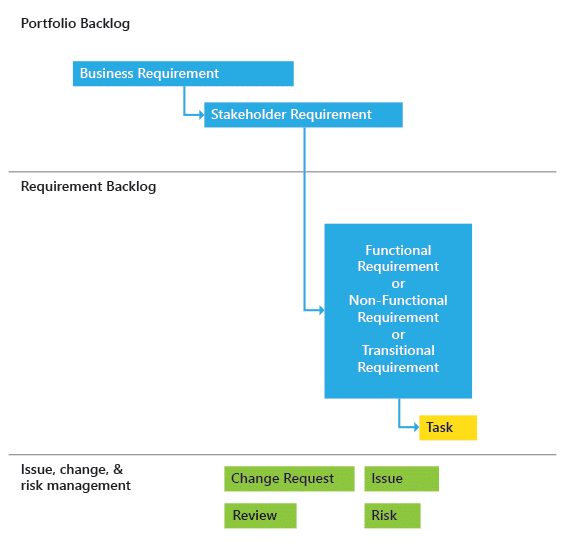
TFS |Azure DevOps Server
The BABOK process template was developed in collaboration with IIBA in order to align with the practices outlined in their BABOK V3 guide. It is designed to support multiple levels ofAzure DevOps Server work item types (WITs), including: Business Requirements, Stakeholder Requirements, Functional, Non-Functional and Transitional Requirements. It helps users to plan, track, and link their requirements, tasks, tests, bugs, feedback, and code review. These work items and other related work items with their associated properties, are all instantiated when user create a team project using the BABOK process template. This template provides a rich environment in which Business / Systems analysts can create, manage and collaborate on requirements, following guidelines suggested in IIBA’s BABOK V3 guide.
| Process Area | BABOK |
| Workflow States |
|
| Portfolio Backlog (1) |
|
| Requirement Backlog (2) |
|
| Task and iteration planning (3) |
|
| Bug backlog management |
|
| Project management |
|
- User can define Business Requirement and Stakeholder Requirement WITs using the Portfolio Backlog. The Portfolio Backlog page shows a single view of the current backlog of work that can be dynamically re-ordered and grouped. With portfolio backlogs user can define a hierarchy of backlogs to understand the scope of work across several teams and see how that work rolls up into broader initiatives.
- User can create Functional Requirement, Non-Functional Requirement or Transitional Requirement WITs and link them to backlog items to manage the portfolio backlog. Product Owners can quickly prioritize work and outline dependencies and relationships
- User can define tasks using the Sprint backlog and task board. The sprint backlog page reflects—in real time—the data user input. Data includes work items assigned to the iteration path, remaining work, individual work capacity, and work interruptions both for the team and individuals. Teams can get instant feedback on the rate of burndown and where they are over capacity.
BABOK-AGILE
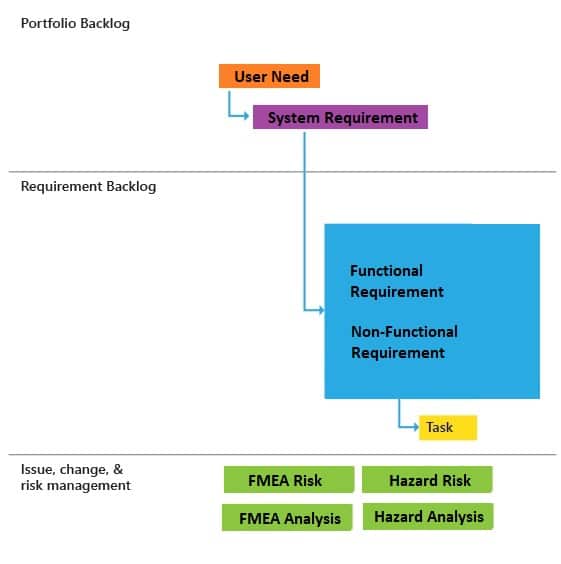
TFS |Azure DevOps Server
The BABOK_Agile process template was developed in collaboration with IIBA in order to align with the practices outlined in their BABOK Agile guide. It is designed to support multiple levels of Azure DevOps Server work item types (WITs), including: Epic, Feature, User Story and Non Functional Requirements. It helps users to plan, track, and link their requirements, tasks, tests, bugs, feedback, and code review.
These work items and other related work items with their associated properties, are all instantiated when you create a team project using the BABOK Agile process template. This template provides a rich environment in which Business / Systems analysts can create, manage and collaborate on requirements, following guidelines suggested in IIBA’s BABOK Agile guide.
| Process Area | BABOK-AGILE |
| Workflow States |
|
| Portfolio Backlog (1) |
|
| Requirement Backlog (2) |
|
| Task and iteration planning (3) |
|
| Bug backlog management |
|
| Project management |
|
- User can define Epic and Feature WITs using the Portfolio Backlog. The Portfolio Backlog page shows a single view of the current backlog of work that can be dynamically re-ordered and grouped. With portfolio backlogs user can define a hierarchy of backlogs to understand the scope of work across several teams and see how that work rolls up into broader initiatives.
- User can create User Story, Non-Functional Requirement or Requirement WITs and link them to backlog items to manage the portfolio backlog. Product Owners can quickly prioritize work and outline dependencies and relationships
- User can define tasks using the Sprint backlog and task board. The sprint backlog page reflects—in real time—the data user input. Data includes work items assigned to the iteration path, remaining work, individual work capacity, and work interruptions both for the team and individuals. Teams can get instant feedback on the rate of burndown and where they are over capacity.
Agile-MR
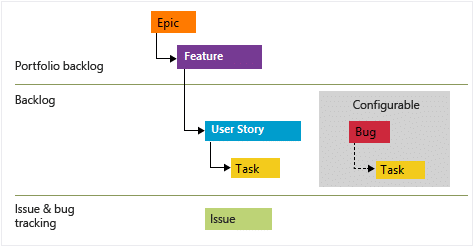
TFS |Azure DevOps Server
Choose Agile when your team uses Agile planning methods, including Scrum, and tracks development and test activities separately. This process works great if you want to track user stories and (optionally) bugs on the Kanban board, or track bugs and tasks on the task board.
Tasks support tracking Original Estimate, Remaining Work, and Completed Work.
SCRUM-MR
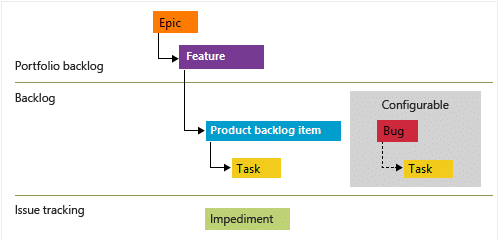
TFS |Azure DevOps Server
Choose Scrum when your team practices Scrum. This process works great if you want to track product backlog items (PBIs) and bugs on the Kanban board, or break PBIs and bugs down into tasks on the task board.
Tasks support tracking remaining work only.
CMMI-MR
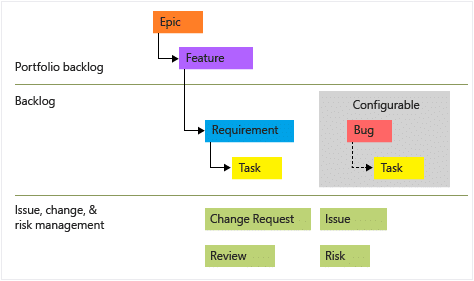
TFS |Azure DevOps Server
Choose CMMI when your team follows more formal project methods that require a framework for process improvement and an auditable record of decisions. With this process, you can track requirements, change requests, risks, and reviews.
This process supports formal change management activities. Tasks support tracking Original Estimate, Remaining Work, and Completed Work.
COMPLIANCE

TFS |Azure DevOps Server
Choose COMPLIANCE when your team is working in a heavily regulated industry that requires additional work items for Risk and Analysis. Our Compliance template has been designed in partnership with the industry’s leading medical device companies.
This process supports formal change management activities. Tasks support tracking Original Estimate, Remaining Work, and Completed Work. FMEA and Hazard Work Items support the ability to qualify Risks and Hazards effectively.
Download Process Template
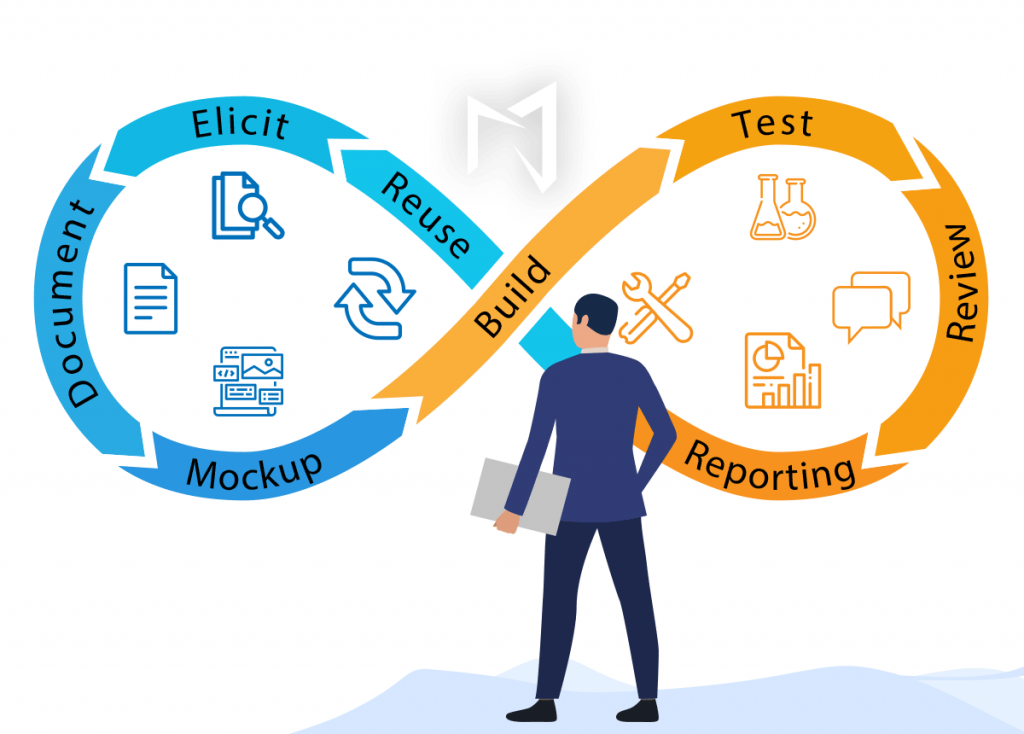
Only submissions with valid email and company names will be considered
By submitting this form, you agree to receive emails from Modern Requirements. You understand that you will be subscribed to the Modern Requirements monthly inbound marketing newsletter and periodic offers for additional content and/or services. Your consent can be withdrawn at any time using the links provided in every email.
All information is confidential and for company use only.

